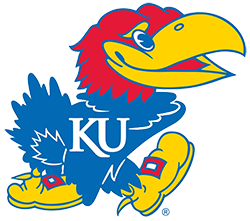Preparing weekley paper reviews
Students who choose to do weekly paper reviews as their special research project should adhere to the following minimal requirements. Additional requirements will be provided depending on the course where such reviews will be an option:
- Submit the list of at least n papers related to the
course topic that you intend to review. Refer to the course requirements
for the specific value of n. The list should be submitted by
the third week of the semester. Format the list using one of the
recognized bibliographic styles (e.g, the APA or the Harvard).
Additional guidance on formatting can be found in the guidelines
for writing a term paper.
- The primary reading material should consist of peer-reviewed
papers for the course you are enrolled in.
For introductory courses, articles
primarily from the following lesser technical journals should
be selected: Communications of the ACM, IEEE Computer,
IEEE Software (see the course syllabus for the course you
are registered in). For non-introductory courses, for example
for advanced software engineering courses, it is recommended
that you also choose articles from the transactions, e.g.,
IEEE Transactions on Software
Engineering and ACM Transactions on Software Engineering and
Methodology.
Papers from select conferences, such as ICSE and FSE, may also
be acceptable for certain courses. Consult the course syllabus
to determine if conference papers are permissible.
- The selected papers should be peer-reviewed research work.
Commentaries and experiential accounts devoid of actual
experiments or empirical studies will not be approved.
- The chosen papers should be minimally seven pages. Strive
for papers that were published during the past four years.
- Formatting requirements. The list of papers should be as complete as possible. It is very likely that your references will include journal articles, conference proceedings articles, books (or chapters in a book or in a collection), and technical reports. Consult your course requirement to see if non-journal papers are acceptable (conference proceedings papers will be accepted only for the conferences that have been listed on the course syllabus). The following is a list of required items for each article:
- Journal articles: author, title, journal, volume, number, year, pages [month].
- Books: author (or editor), title, publisher, year, edition, publisher address.
- Book chapters: same as book and/or conference proceedings articles.
- Conference proceedings: author, title, proceedings title, pages, year, publisher, [editor, month, place]
- Thesis/dissertation: author, title, school, year, [address]
- When submitting the list of papers for approval, use a recognized bibliography style, e.g., the APA or Harvard style. For each paper, you should minimally provide the following: all authors, paper title, journal title, volume, number, pages, year, publisher.
- Formatting requirements. The list of papers should be as complete as possible. It is very likely that your references will include journal articles, conference proceedings articles, books (or chapters in a book or in a collection), and technical reports. Consult your course requirement to see if non-journal papers are acceptable (conference proceedings papers will be accepted only for the conferences that have been listed on the course syllabus). The following is a list of required items for each article:
- Your reviews should be at least two pages
(singlespace), though a good review should be 2--3 pages. Your
review should be a true review, evaluation, and takeaways
of the work. Avoid paragraph by paragraph summaries. Your
first paragraph should be a summary of the entire article
(the authors, motivation, methodology, validation approach,
and contributions and results. Here are some minimal items to
include in each review:
- Briefly introduce the paper you are reviewing, including the title, authors, publication venue, and publication date. Provide a concise overview of the paper's main topic, problem statement, and research objectives.
- Summarize the key contributions and findings of the paper. Highlight the main research questions or hypotheses addressed. Mention the methodology used by the authors, if relevant.
- Discuss the strengths of the paper. What aspects of the research are well-executed? Identify any weaknesses or limitations in the paper. Are there areas where the research could be improved? Assess the significance and relevance of the paper's findings to the field of software engineering. Consider the quality and appropriateness of the research methodology, data collection, and analysis techniques.
- Assess the originality and novelty of the paper's contributions. Explain how the paper advances the state of knowledge in software engineering.
- Comment on the clarity and organization of the paper's writing. Evaluate the quality of figures, tables, and other visual aids. Note any ambiguities or confusing sections in the paper.
- Discuss how the paper relates to existing research in the field. Are there significant references or related work cited by the authors? Evaluate how the paper builds upon or extends previous research.
- Summarize your overall assessment of the paper, taking into account its strengths and weaknesses. State whether you believe the paper makes a valuable contribution to the field of software engineering.
- Provide any final thoughts or insights regarding the paper's importance or relevance to the course. Provide any final thoughts or insights regarding the paper's importance or relevance to the course.
- Paper reviews should be submitted to Canvas at
the beginning of each class session.
For each review, provide the following:
Your full name
Course title
Review # and date
Full citation of the paper being reviewed
Follow the above with your written review. At the end, it is OK to include one or two additional references (in APA or Harvard bibliography style) that you may have cited in your review.
- Be prepared to answer questions about any paper you have reviewed or deliver a brief presentation on any given paper; some papers may be selected for a more in-depth presentation.
Powerful digital libraries (links)

Professor Hossein Saiedian
Electrical Engineering & Computer Science
Eaton Hall 3012
University of Kansas
1520 W 15th St
Lawrence, KS 66045-7621
+1 785 864-8812
saiedian at eecs.ku.edu


